- Home
- Bruce Sterling
The Dead Media Notebook Page 3
The Dead Media Notebook Read online
Page 3
“The quipumaker’s recording was nonlinear. A group of strings occupy a space that has no definite orientation; as the quipumaker conmnected strongs to each other, the space became defined by the points where the strings were attached. Essentially then, the quipumaker had to have the ability to conceive and execute a recording in three dimensions with color.”
Source: Communication in History: Technology, Culture, Society David Crowley and Paul Heyer, eds. Longman, New York and London, 1991 ISBN 0-8013-0598-5
Chaucerian Virtual Reality
From Bruce Sterling
“Many of the minstrels were conjurers. These entertainers probably reached their greatest popularity in the fourteenth century, when they were known as tregetours. Some of their tricks were generally attributed to an understanding between the performer and the devil, this view being held by James I.
“Accordingly, the tregetours were frequently classed with magicians, sorcerers and witches. They often travelled about in companies, and it is to be assumed that they carried with them the various contrivances necessary for the performance of tricks which did not depend on the most precious accomplishment of the conjurer, then as today—sleight of hand.
“In ‘The Frankeleyns Tale’ Chaucer descries some of the tricks. Among them were the appearance, in a hall, of water and a barge, a lion, flowers, a vine, a castle of lime and stone—all of which vanished as mysteriously as they had appeared: He also tells how there appeared wild deer, some being slain by arrows and some killed by the hounds.
“Falconers were seen on the bank of a river, where the birds pursued herons and slew them. Knights jousted on a plain. The amazed spectator saw himself dancing with his lady.
“These were undoubtedly magic lantern effects, yet the lantern itself is usually thought to have been invented by Athanasius Kircher in the middle of the seventeenth century. The explanation, however, is that in the fourteenth century there were glass lenses which gave good telescopic and microscopic effects.”
Source: Popular Entertainments Through the Ages by Samuel McKechnie London, Sampson Low, Marston & Co., Ltd GV 75 M35 MAIN UT library (1937?)
The Milton Bradley Vectrex
From Patrick Lichty
What is Vectrex?
Vectrex is one of the most inspired video game machines ever produced (but similar things were said about the Edsel and Titanic). Its point of distinction is the fact that it uses vector ‘line’ graphics (as opposed to raster ‘pixel’ graphics). This is the same type of screen used in such arcade classics as Space Wars, Asteroids, Battlezone and Tempest.
“The machine has a 9 x 11 inch black and white screen and comes with a built-in Asteroids clone called Minestorm. The games come with plastic overlays that slide over the screen to cut down on flicker and give some illusion of color. It uses one of the most advanced 8 bit processors, the 68A09 (6809 with 1.5MHz clock speed), and a popular and excellent sound chip, General Instruments AY-3-8192, which can produce a wide range of noises. Also included is a 1.5 inch, self-centering, joystick with 4 buttons on the right. It uses an analog/potentiometer system allowing differing degrees of directional input.
“The machine’s footprint takes up a little less than a square foot on a desk (in fact, it quite resembles a jet black Macintosh SE sans mouse and keyboard), and can be operated easily in that area. The joystick is connected via a springy telephone-like cord and can be folded into the base of the machine for portability. The machine is moderately transportable and very well constructed but, alas, very much extinct.
“It made its debut late in 1982 and was quite scarce by the end of 1984 due to the Great Video Game Depression of ‘82 which forced Milton Bradley (who bought the rights to the Vectrex from General Consumer Electronics (GCE)) to discontinue production due to to poor sales. After this, the rights to the Vectrex and all related materials were returned to the original developers, Smith Engineering. Smith Engineering has graciously condoned the not-for- profit circulation of any duplicatable materials including games and manuals and is happy to see it is still ‘alive’ in certain circles.
“Touch-Sensitive Screen (prototype known to exist)
Computer Adapter with BASIC (prototypes rumored to exist)
Computer Keyboard
Printer “Disk Driver/Wafer Tape Drive
Modem
Computer Software:
Create Your Own Video Game
Music Maestro
Art Program in LOGO
Basic Science
Solar System
Word Processing
Q. Isn’t copying the games by burning EPROMs stealing or violating a copyright? “If the system is ‘dead’ then no money is lost by making copies of something which otherwise would never be available. Even so, it is a fuzzy matter and technically the answer should probably be, ‘YES.’ Fortunately, Smith Engineering has given Usenetters permission to make copies of all Vectrex related materials (manuals, games, overlays, etc.) as long as it is for distribution to members of the group and as long as it is not for profit.
Source: Vectrex FAQ version 4.0 compiled by Gregg Woodcock Vectrex ‘Frequently Asked Questions’ List! Created: 9/1/92 version 4.0 Copyright worldwide © 1992, 1996 Created and maintained by Gregg Woodcock
the Voice-Activated Typewriter of 1916
From Darryl Rehr
Are journalists ever guilty of hyperbole? Though we would like to be kind to the hacks who bring us word of the world’s events, we must face facts and read what they write with the proverbial grain of salt.
For a typewriter collector, the image of the Phonoscribe seen on the cover of the April 1916 issue of The Electrical Experimenter was tantalizing, to say the least.
The cover shows a relaxed businessman speaking casually into a microphone as his voice-activated typewriter dutifully types out the text on his desk. In 1998, when such complex technology has yet to be realized on a commonplace level, we are astounded to see that there was a version in the works as early as 1916.
Unfortunately, the fine print inside The Electrical Experimenter reveals a device much different than the one on the cover. It was the work of a Brooklyn, New York, man named John D. Flowers, and according to the magazine, it apparently was never intended to type a letter itself.
Flowers, it seems, was fascinated by the workings of human speech. In earlier experiments with voice- operated typewriters, tuned reeds were used to discriminate among the different sounds of the spoken word. Unfortunately, the reeds worked reasonably well for vowels but not well with consonants.
That’s a pretty big problem in an alphabet in which consonants are the large majority. The inventor claims to have found the problem in the normal spoken voice. The vocal cords, he concluded, produced too many irrelevant overtones. The solution was to utilize a whispered voice.
Flowers told us that the shape of a sound was identical whether spoken at a normal tone or at a whisper. So, his voice-operated writing machine (we’ll learn later why it wasn’t a typewriter) depended on whispers so all those extraneous vocal sounds could be ignored.
Flowers hooked up a microphone to a string galvanometer, a device which produced a wiggle in a string when electric current was applied. A light shining through the string exposed film moving in a camera to produce a photographic record of the sounds spoken into the mike (whispered sounds, remember). In theory, it was not unlike the process that later made movies into talkies.
Running through a number of different speakers, Flowers produced a definitive dictionary of his electrically generated Phonetic Alphabet.
Each letter of the English alphabet had a corresponding squiggle, which was unerringly produced by his recording apparatus when anyone whispered into the microphone.
To turn this idea into a voice-operated writing machine, Flowers proposed a wonderfully Byzantine array of mirrors, lenses, and resonator circuits coupled to a microphone and selenium cell, which controlled a pen writing on a revolving drum.
When someone spoke into the microphone, Flowers’ phonetic alphabet would be written on the drum. Thus, his voice-operated machine. But wait, do we sense a lack of closure here?
What good does this do us in the real world?
To quote from The Electrical Experimenter: “Hence, if this was to be used commercially or otherwise, it would be necessary for those making use of such a ‘phonoscribe’ (if we may so term this device), to learn this alphabet or else to employ a transcriber who could read it.” So, in the end, what has the Experimenter’s cover led us to?
A dictation machine that produces a line of squiggles that can only be read by somebody who wants to learn a whole new alphabet! And this at a time when the boss routinely spoke into his Dictaphone or Ediphone for his secretary to hear and transcribe with no additional training!
Underwood, by the way, had a hand in financing Mr. Flowers’ work. One wonders at what point the company cut him off.
[Bruce Sterling remarks: In 1916, “Electrical Experimenter” was published by Hugo Gernsback. Gernsback had not yet formally invented the science fiction pulp, he would launch AMAZING STORIES in 1926, but he frequently larded “Electrical Experimenter” with his proto-SF “Munchausen stories” such as “Thought Transmission on Mars” (1916) and “Martian Amusements” (1916). So much for journalistic hyperbole in the business machine biz.]
Source: The Electrical Experimenter, April 1916
Hotel Annunciator
From Bruce Sterling
B. A. Botkin is further quoting from a book called VALENTINE’S MANUAL OF OLD NEW YORK, 1926, edited by Henry Collins Brown, published by Valentine’s Manual Inc., pages 96-98.
“Before the days of the telephone, hotels had annunciator boards to indicate the room number of a guest calling up the office for service. Then, later, in the Eighties, some one invented a machine to do away with fifty percent of the toil involved in a journey to find out what was wanted and a later journey in supplying it. The machine was in use of most of the hotels of the early Nineties.
“In each room of the hotel was a dial with a movable arrow like a clock hand. On the dial was printed the names of everything a guest would be at all likely to want, all the drinks that were ever heard of, paper, envelopes, telegraph blanks, ‘help,’ a doctor, police, chambermaid, messenger boy, eggs, toast, mils, soup, oysters, breakfast, dinner, tea, in fact every eatable in common demand, a city directory, playing cards, cigars, cigarettes, chewing tobacco, a barber; in short, everything in a list of one hundred to one hundred and fifty necessaries.”
[Bruce Sterling remarks: my dead-media bogometer is ticking over here, a hotel-room clock-dial with 150 separate divisions? Including “oysters” and a galaxy of turn-of-the-century cocktails? The “telegraph blanks” are especially touching, dead media for dead media.]
“The guest pointed the arrow to the name of whatever he wanted and by pressing a button registered his demand on the dial behind the clerk’s desk.
“It was discovered, however, that notwithstanding the wide compass of the dial there was always something a guest wanted that did not appear on its catalogue. Then again the dial was prone to get out of order and a guest calling for ice wate was on occasion surprised with a service of hot tea. The dials were not long in use before they were superseded by the telephone.”
Source: SIDEWALKS OF AMERICA, edited by B. A. Botkin, Bobbs-Merrill Com., 1954, pages 246-247.
The Cyrograph
From Dan Rabin
Mr. Sterling, I just attended your talk at Apple, and I thought I’d try to get this to you before you get home. The Dead Medium in question is the CYROGRAPH. It was a form of authentication for duplicate documents used in the Middle Ages. The document was written in duplicate on a piece of vellum (or parchment); the copies were cut apart and retained by two different parties. Sometimes the cut was deliberately irregular in order to make spurious matches unlikely. In addition, lettering would be placed where the cut was to be made so that both the shape of the cut and the lettering would have to match in order to authenticate the copies.
Source: References (from Library of Congress online catalog): 92-131963: Brown, Michelle. A guide to western historical scripts : from antiquity to 1600 / London : British Library, 1990. 138 p. : ill. ; 29 cm. LC CALL NUMBER: Z114 .B87 1990 92-160830: Brown, Michelle. Anglo-Saxon manuscripts / Toronto ; Buffalo : University of Toronto Press, 1991. 80 p. : ill. (some col.) ; 24 cm. LC CALL NUMBER: Z8.G72 E53 1991
the Scopitone
From Dan Rabin
The Scopitone was a precursor of the rock video, a visual jukebox introduced in France in 1963. It was a coin-operated large-screen device intended for the bar and nightclub market, showing brief 16mm color films of such period popstars as Lesley Gore, Dion, the Tijuana Brass and Nancy Sinatra.
These devices were essentially extinct by 1968 -- “victims of slot-machine racketeers and censorial prudes,” according to Request magazine writer James Sullivan. San Francisco’s Roxie Cinema has run three Scopitone festivals in recent years.
Sam Wasserman is a Scopitone collector, owning six Scopitone players and “thousands” of their films. He has been transferring his Scopitone reels to VHS cassettes and will send a catalog of his prizes for a self-addressed stamped envelope. His address is P. O. Box F, Daly City CA 94017.
Source: Request Magazine October 1995 p 10; James Sullivan, reporter; Sam Wasserman, Scopitone collector
dead computer languages
From Dan Rabin
Dead computer languages covered in ‘History of Programming Languages’…
Fortran I, II and III
ALGOL 58 and 60
Lisp 1 and 1.5
COBOL (the dead-ness of this language may be debatable)
APT
JOVIAL
SIMULA I and 67
JOSS
PL/1
SNOBOL
APL (ditto)
Source Wexelblat, Richard (ed.) History Of Programming Languages Academic Press (HBJ), ISBN 0-12-745040-8
artoc: The US Army’s portable pneumatic-tube powered multi-media system. in tents.
From Tom Jennings
“One hundred million bits of random access storage are provided by two magnetic disk files, each housed in a 2-1/2 ton utility truck.”
ARTOC, a late-1950’s hare-brained Army tactical field communications coordination system, is a breathtaking mixture of Rube Goldberg technologies whose purpose was to coordinate information from many different and incompatible sources (messengers on foot; radio; centrally-gathered intelligence, etc) and to present it in a coordinated manner to Army personel who needed to make decisions based upon the information, once coordinated.
ARTOC is at once beautiful and horrifying; it used brute force, Army logic, blind faith and the latest in computer technology to put together what can only be called a multi-media system.
It was very, very ambitious, to say the least. Apparently this thing actually existed, at least in prototype form.
ARTOC is a portable, field-operated system. One tent full of people accepted the sundry inputs, and input them to computer(s), both graphical and textual.
It is nearly impossible today to imagine how far-fetched storing graphical data in a computer was, in 1959. It just wasn’t done. These were vector, not raster, days, and the details of implementation are not elaborated upon in this article.
You should read the article for details; but essentially, there was one tent where input was entered into the system, and a number of other tents, somewhat physically remote from the input area, that contained a number of display stations.
Data was input to a computer, which was used to produce photographic-type slides, in color, by using a non-real-time cathode-ray tube with RGB filters to make each “separation”. The slide-producing machine spit out a developed and mounted slide in under 10 seconds (please don’t stand in its way).
Each slide had a machine-readable indext attach
ed. These were delivered by pneumatic tube to the remote display stations. Each display station consisted of a small (20”) rear-projection viewer and a large (7 foot) front projection viewer.
There was some way to select which slide(s) to view; but essentially the slides were overlays for maps, and text could be overlaid in some manner on the screens too.
“A very simple, reliable pneumatic distribution and transport system automaticall delivers the slides from a central slide generator to the many display units in a user area. Two slide generators which feed the same pneumatic distribution network are located in each user area to maintain continuous operation during maintenance and reliading periods.
Positive slides arrive at the display units about 12 sec. after initiation of computer output. This was also a FIELDATA system, experience with which lead directly to the first ASCII standard, in 1963. It used the military MOBIDIC computer, a portable, transistorized computer, apparently under 150 lbs (don’t laugh; most computers in 1959 consumed a thousand square feet).
Source: ELECTRONIC INFORMATION DISPLAY SYSTEMS”, Spartan Books, Inc, Washington D.C., 1963; edited by James H. Howard, Rear Admiral, U.S.N.(Ret.) [2015 Note: www.wps.com/texts/ARTOC/index.html can be retreived from archive.org]
The Magic Lantern; Peck & Snyder’s price list
From Bruce Sterling
I have recently come into happy possession of “Peck and Snyder’s Price List of Base Ball, Gymnasium, Boating, Firemen, Cricket, Archery, Lawn Tennis and Polo Implements, Guns, Skates, Fishing Tackle. Manly Sporting Goods, Novelties, &c.” This catalog was published in 1886. In 1971 it was re- released by the “American Historical Catalog Collection” of the Pyne Press at Princeton (LC# 75-24886, ISBN 0-87861-094-4).

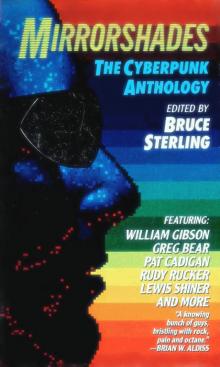 Mirrorshades: The Cyberpunk Anthology
Mirrorshades: The Cyberpunk Anthology The Wonderful Power of Storytelling
The Wonderful Power of Storytelling Love Is Strange (A Paranormal Romance)
Love Is Strange (A Paranormal Romance)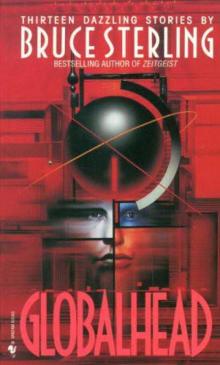 Globalhead
Globalhead Essays. FSF Columns
Essays. FSF Columns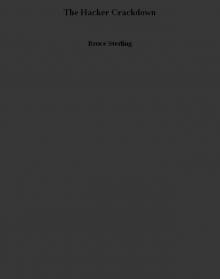 The Hacker Crackdown
The Hacker Crackdown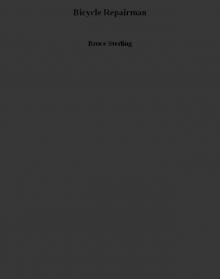 Bicycle Repairman
Bicycle Repairman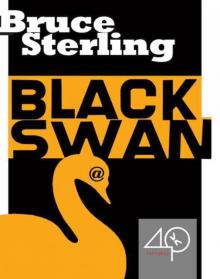 Black Swan
Black Swan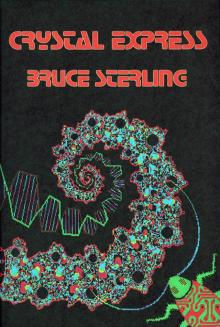 Crystal Express
Crystal Express Islands in the Net
Islands in the Net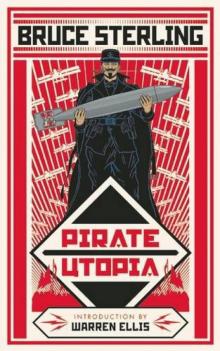 Pirate Utopia
Pirate Utopia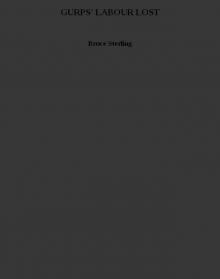 GURPS' LABOUR LOST
GURPS' LABOUR LOST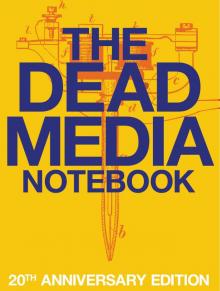 The Dead Media Notebook
The Dead Media Notebook Unstable Networks
Unstable Networks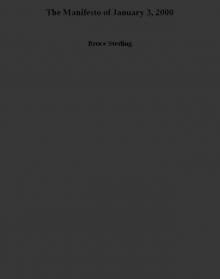 The Manifesto of January 3, 2000
The Manifesto of January 3, 2000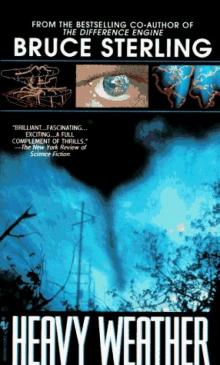 Heavy Weather
Heavy Weather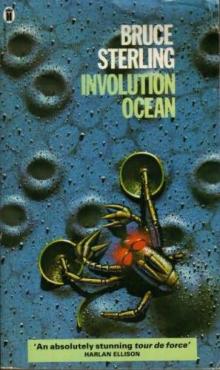 Involution Ocean
Involution Ocean The Epic Struggle of the Internet of Things
The Epic Struggle of the Internet of Things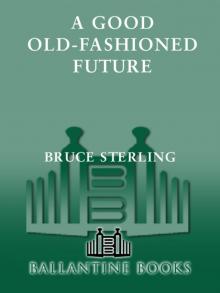 A Good Old-Fashioned Future
A Good Old-Fashioned Future The Littlest Jackal
The Littlest Jackal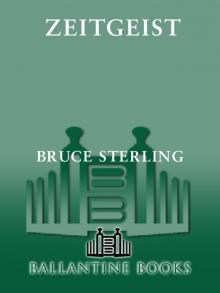 Zeitgeist
Zeitgeist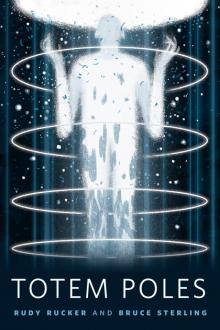 Totem Poles
Totem Poles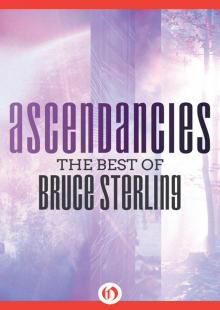 Ascendancies
Ascendancies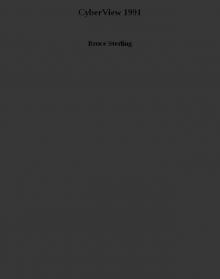 CyberView 1991
CyberView 1991 War Is Virtual Hell
War Is Virtual Hell Taklamakan
Taklamakan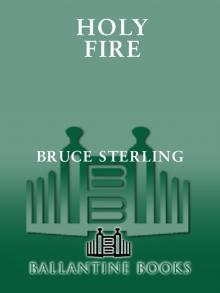 Holy Fire
Holy Fire Cyberpunk in the Nineties
Cyberpunk in the Nineties Schismatrix Plus
Schismatrix Plus The Artificial Kid
The Artificial Kid Essays. Catscan Columns
Essays. Catscan Columns Maneki Neko
Maneki Neko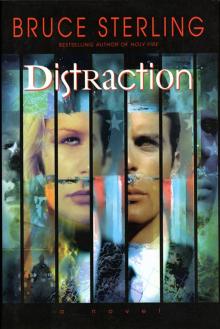 Distraction
Distraction In Paradise
In Paradise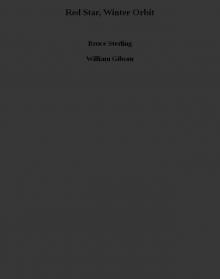 Red Star, Winter Orbit
Red Star, Winter Orbit Luciferase
Luciferase